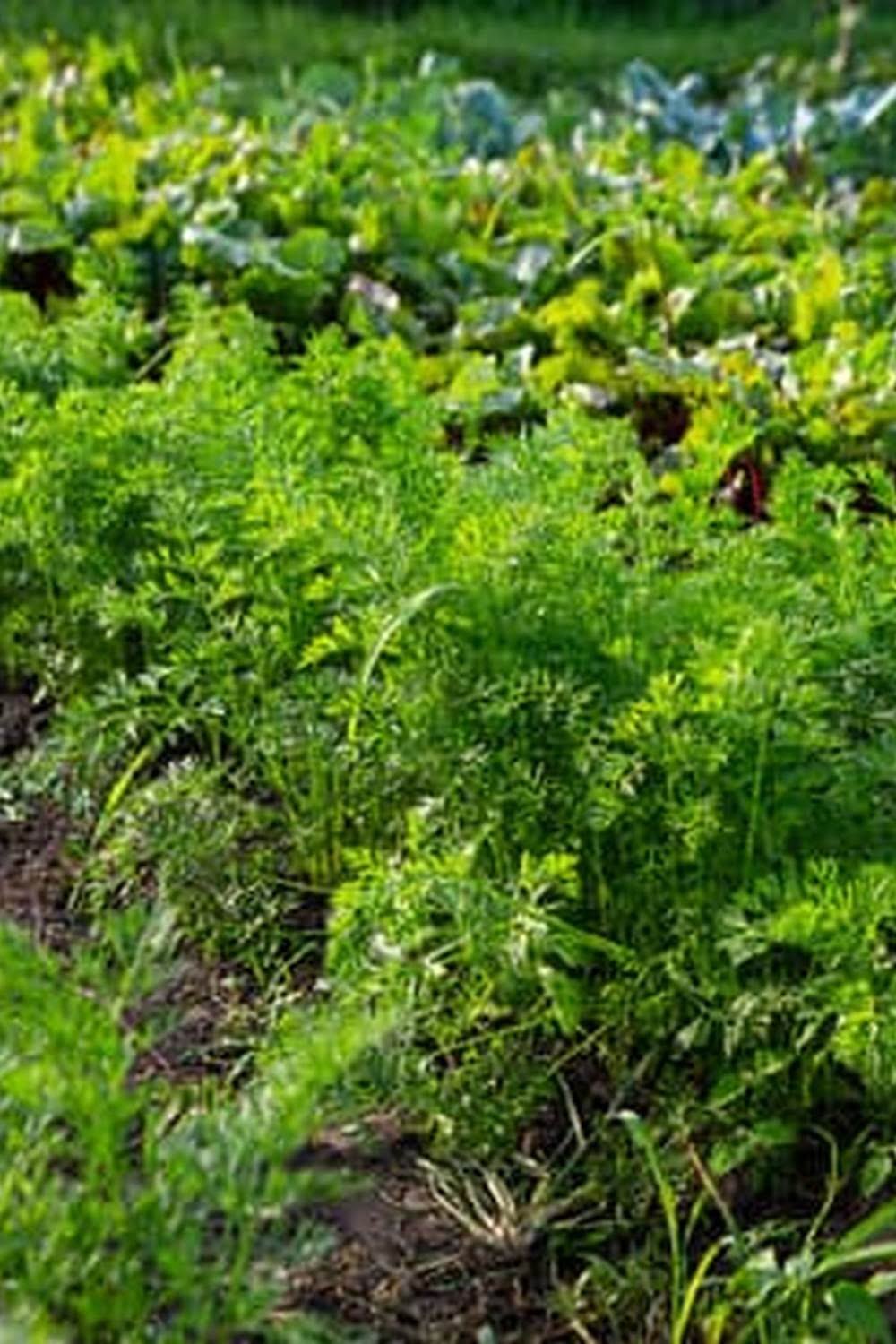Weed control is a crucial aspect of maintaining a healthy and productive vegetable garden. One effective method to manage weeds and maintain the health of your vegetable plants is by using weed barriers.
These barriers are designed to prevent the growth of unwanted weeds, while still allowing air, water, and nutrients to reach the soil. In this article, we will explore the importance of weed barriers in vegetable gardens and delve into the various types available, installation methods, maintenance tips, common mistakes to avoid, effectiveness comparisons, and real-life success stories.
When it comes to maintaining a thriving vegetable garden, the presence of weeds can be quite detrimental. Weeds compete with your vegetables for essential resources like water and nutrients, ultimately affecting their growth and productivity. This is where weed barriers come into play as they provide an effective solution for reducing weed growth without the need for constant manual weeding.
In the following sections, we will discuss the numerous benefits of employing weed barriers in vegetable gardens. From enhancing water conservation to reducing soil erosion and improving overall plant health, these barriers offer multifaceted advantages that every gardener can benefit from. Additionally, we will explore the different types of weed barriers available such as fabric, plastic, mulch, and more, providing insights into their unique features and suitability for different garden environments.
Benefits of Using Weed Barriers in Vegetable Gardens
When it comes to maintaining a vegetable garden, using a weed barrier can be incredibly beneficial. A weed barrier for vegetable gardens helps to prevent the growth of unwanted weeds, which compete with your vegetables for nutrients and water. By using a weed barrier, you can significantly reduce the time and effort required for weeding, allowing you to focus on caring for your plants and harvesting your crops.
One of the key benefits of using a weed barrier in your vegetable garden is its ability to conserve soil moisture. By preventing weeds from growing and competing with your vegetables for water, a weed barrier ensures that your plants have an ample water supply. This is especially important during hot and dry periods when water consumption by both weeds and vegetables is at its highest.
Furthermore, using a weed barrier in your vegetable garden can help to maintain soil temperature. In colder climates, a weed barrier can act as insulation, keeping the soil warmer and promoting better plant growth. Conversely, in warmer climates, a weed barrier can help to keep the soil cooler, which is particularly beneficial for heat-sensitive crops. Overall, installing a weed barrier can create more optimal growing conditions for your vegetables.
Finally, using a weed barrier can also contribute to improved air quality in your vegetable garden by reducing the need for chemical herbicides. By minimizing the growth of weeds naturally through barriers such as fabric or mulch, you can avoid the use of potentially harmful chemicals that could otherwise find their way into the air or groundwater.
| Benefits | Data |
|---|---|
| Prevention of Weed Growth | Competition Reduction |
| Soil Moisture Conservation | Water Competition Reduction |
| Improved Air Quality | Avoidance of Chemical Herbicides Use |
Types of Weed Barriers Available for Vegetable Gardens (Fabric, Plastic, Mulch, Etc)
When it comes to choosing the right weed barrier for your vegetable garden, there are several options available on the market. Each type of weed barrier, whether fabric, plastic, mulch, or others, has its own set of pros and cons. Here is a breakdown of the different types of weed barriers to help you make an informed decision:
- Fabric Weed Barrier: This type of weed barrier is typically made from woven or non-woven materials. It allows water and air to pass through while blocking sunlight and preventing weed growth. Fabric weed barriers are durable and can last for several years, making them a popular choice among gardeners.
- Plastic Weed Barrier: Plastic weed barriers come in various thicknesses and can effectively prevent weeds from growing. However, they do not allow air and water to penetrate the soil as easily as fabric barriers do. This can result in poor drainage and soil compaction if not installed correctly.
- Mulch: Organic mulch, such as wood chips or straw, can also serve as an effective weed barrier for vegetable gardens. Mulch helps retain moisture in the soil, suppresses weed growth, and eventually breaks down to improve the soil’s fertility. While it may require more frequent replenishing compared to fabric or plastic barriers, many gardeners prefer mulch for its natural and environmentally friendly properties.
Before deciding on a specific type of weed barrier for your vegetable garden, consider the specific needs of your plants, climate conditions in your area, and your maintenance preferences.
When selecting a weed barrier for your vegetable garden consider the following factors:
- Durability
- Water permeability
- Maintenance requirements
- Environmental impact
Comparing these factors will help you determine which type of weed barrier is best suited for your specific gardening needs.
How to Install a Weed Barrier in Your Vegetable Garden
Installing a weed barrier in your vegetable garden is an important step in maintaining a healthy and productive garden. The main purpose of a weed barrier is to prevent unwanted weeds from growing and competing with your vegetable plants for nutrients, water, and sunlight. By taking the time to properly install a weed barrier, you can significantly reduce the amount of time and effort spent on weeding, allowing you to focus on more enjoyable aspects of gardening.
One of the most common types of weed barriers for vegetable gardens is landscape fabric. This woven or non-woven material is placed on the soil surface to block the growth of weeds while still allowing air and water to penetrate.
Another option is plastic sheeting, which provides an effective barrier against weeds but may not allow for proper drainage. Organic mulches such as wood chips or straw can also be used as a natural weed barrier while adding nutrients to the soil as they break down.
To install a weed barrier in your vegetable garden, begin by clearing the area of any existing weeds and debris. Next, lay the chosen weed barrier material over the soil surface, making sure to overlap the edges by several inches to prevent any gaps for weeds to grow through. Secure the barrier in place using landscape staples or heavy rocks to keep it from shifting.
Proper installation and maintenance are key factors in maximizing the effectiveness of a weed barrier for vegetable gardens. Regularly check for any tears or damage to the barrier and promptly repair them if necessary. Additionally, adding a layer of organic mulch on top of the weed barrier can help further suppress weed growth while providing additional benefits to your vegetable plants.
| Types of Weed Barriers | Effectiveness |
|---|---|
| Landscape Fabric | Allows air and water penetration |
| Plastic Sheeting | Effective but may hinder drainage |
| Organic Mulch | Natural and adds nutrients to soil |
Tips for Maintaining and Managing Weed Barriers in Vegetable Gardens
Maintaining and managing weed barriers in vegetable gardens is essential to ensure their effectiveness in preventing the growth of unwanted plants. Here are some tips to help you keep your weed barrier in top condition:
Regular Inspections
Inspect your weed barrier regularly to check for any tears, holes, or signs of wear and tear. Addressing these issues promptly will help to maintain the barrier’s integrity and prevent weeds from penetrating through.
Weed Control
Even with a weed barrier in place, some weeds may still manage to grow. It’s important to regularly remove any weeds that appear on the surface of the barrier to prevent them from taking root and causing damage.
Proper Mulching
If you’re using a mulch-based weed barrier, make sure to replenish the mulch layer as needed. Over time, the mulch may break down or get displaced, so adding a fresh layer will help to maintain its effectiveness at preventing weed growth.
Keeping Edges Secure
Pay special attention to securing the edges of the weed barrier. Use landscaping pins or other securements to keep the barrier in place and prevent it from shifting or being lifted by wind or other environmental factors.
By following these tips for maintaining and managing your weed barrier for vegetable gardens, you can ensure that it continues to provide effective weed control and support healthy growth for your vegetables.
Common Mistakes to Avoid When Using Weed Barriers in Vegetable Gardens
When using a weed barrier for vegetable gardens, it is important to be aware of common mistakes that can hinder its effectiveness. By avoiding these mistakes, you can ensure that your weed barrier serves its purpose in keeping your vegetable garden free from unwanted weeds.
Choosing the Wrong Type of Weed Barrier
One common mistake is selecting the wrong type of weed barrier for your vegetable garden. It is essential to choose a barrier that is suitable for the specific conditions of your garden. For example, fabric barriers are more breathable and allow water and nutrients to reach the soil, while plastic barriers may trap moisture and lead to mold or mildew growth. Understanding the pros and cons of each type will help you make an informed decision.
Improper Installation
Another mistake to avoid is improper installation of the weed barrier. This includes not properly preparing the soil before installing the barrier, failing to overlap seams and edges, or not securing the barrier in place. A poorly installed barrier can lead to weeds finding their way through gaps and compromising its effectiveness.
Neglecting Maintenance
Neglecting maintenance of the weed barrier is also a common mistake. Over time, debris, mulch, and even small weeds can build up on top of the barrier, allowing new weeds to take root. Regularly inspecting and maintaining the barrier will help prevent this from happening.
By being mindful of these common mistakes when using a weed barrier for your vegetable garden, you can maximize its effectiveness in keeping unwanted weeds at bay.
Comparing the Effectiveness of Different Weed Barriers for Vegetable Gardens
When it comes to choosing the right weed barrier for your vegetable garden, it’s essential to understand the different types available and their effectiveness in preventing weed growth. Here’s a comparison of the most common weed barriers used in vegetable gardens:
- Fabric: Weed fabric, also known as landscape fabric, is a popular choice for vegetable gardens. It allows water and nutrients to penetrate the soil while blocking out sunlight to prevent weed growth. However, some weeds may still grow through the fabric over time.
- Plastic: Plastic mulch is another option for controlling weeds in vegetable gardens. It helps retain soil moisture and warmth while preventing weed growth by blocking sunlight. However, it may not be as effective at allowing air and water to reach plant roots as fabric barriers.
- Mulch: Organic mulches such as wood chips or straw can also be used as weed barriers in vegetable gardens. These materials not only prevent weed growth by blocking sunlight but also help improve soil structure and fertility. However, they may decompose over time and require regular replacement.
In comparing the effectiveness of these different weed barriers, it’s important to consider factors such as durability, permeability, and long-term maintenance. Fabric barriers are durable and allow for good permeability but may require periodic replacement due to weed penetration. Plastic mulch offers excellent weed control but may hinder soil health if not managed properly. Organic mulches provide both weed control and soil improvement benefits but need regular replenishment.
Ultimately, the choice of a weed barrier for your vegetable garden will depend on your specific needs and preferences. Some gardeners may opt for a combination of different barriers to maximize effectiveness while others may prioritize organic methods such as mulching for overall soil health.
Real-Life Success Stories of Using Weed Barriers in Vegetable Gardens
One of the best ways to understand the effectiveness of using weed barriers in vegetable gardens is to hear real-life success stories from gardeners who have implemented this practice. Many gardeners have found that using weed barriers has significantly improved the health and productivity of their vegetable gardens.
Some gardeners have reported that using weed barriers not only reduces the amount of time spent weeding but also improves the overall health of their vegetable plants. By preventing weeds from competing with their crops for nutrients and water, gardeners have seen an increase in yield and quality of their vegetables. Additionally, some have found that using weed barriers can help to regulate soil temperature and moisture, leading to healthier plants overall.
Gardeners who have used a variety of weed barrier options, such as fabric, plastic, or mulch, have shared their experiences with each type. While each has its benefits, some prefer fabric weed barriers for their ability to allow air and water to pass through while blocking out weeds. Others find plastic or mulch barriers to be more effective at preventing weed growth altogether.
Overall, these success stories demonstrate the positive impact that using a weed barrier for vegetable gardens can have on the overall health and productivity of a garden. By implementing proper installation and maintenance techniques, many gardeners have been able to enjoy thriving vegetable gardens with minimal weed interference.
Conclusion
In conclusion, incorporating a weed barrier for vegetable gardens can provide numerous benefits for gardeners. Not only does it significantly reduce the amount of time and effort spent on weeding, but it also helps to conserve water, maintain soil temperature, and prevent the spread of pests and diseases. By blocking out sunlight, weed barriers effectively suppress the growth of unwanted plants while allowing your vegetables to thrive.
When considering the types of weed barriers available for vegetable gardens, it’s important to weigh the pros and cons of each option. While fabric barriers are durable and allow for moisture and air exchange, plastic barriers offer excellent weed suppression and heat retention. Mulch, on the other hand, provides organic matter to the soil as it decomposes. The choice ultimately depends on your specific gardening needs and preferences.
Proper installation and maintenance are crucial for ensuring the effectiveness of your weed barrier. Make sure to properly prepare your garden bed before laying down the barrier and regularly check for any signs of damage or weeds breaking through. Additionally, be mindful of common mistakes such as leaving gaps in the barrier or not applying enough mulch on top. Overall, implementing a well-maintained weed barrier can lead to healthier plants and higher yields in your vegetable garden.
Incorporating a weed barrier for vegetable gardens is a worthwhile investment that can greatly improve the overall health and productivity of your crops. Making strategic choices based on your specific gardening needs will ultimately determine which type of barrier is most effective for you. By following best practices for installation and maintenance while avoiding common mistakes, you can successfully harness the benefits that come with using a weed barrier in your vegetable garden.
Frequently Asked Questions
Should You Put Weed Barrier Under Vegetable Garden?
It is not necessary to put a weed barrier under a vegetable garden. While it may seem like a good idea to prevent weeds from growing, it can also hinder the natural process of soil enrichment and water filtration.
What Is the Best Weed Blocker for Vegetable Gardens?
The best weed blocker for vegetable gardens depends on the specific needs of the garden. Organic mulches like straw or wood chips can effectively block weeds while adding nutrients to the soil. Landscape fabric can also be used as a barrier but requires proper installation.
How Do You Install a Weed Barrier in a Vegetable Garden?
To install a weed barrier in a vegetable garden, start by clearing the area of any existing weeds and debris. Lay down the chosen material, whether it’s organic mulch or landscape fabric, covering the entire garden bed.
Cut holes in the barrier for planting, ensuring proper spacing for your vegetables. Finally, add an additional layer of mulch on top to further inhibit weed growth and retain moisture in the soil.

If you’re looking to get into vegetable gardening, or are just looking for some tips on how to make your current garden better, then you’ve come to the right place! My name is Ethel and I have been gardening for years. In this blog, I’m going to share with you some of my best tips on how to create a successful vegetable garden.





